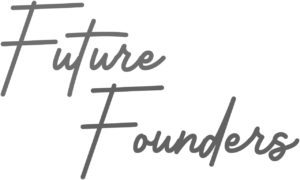
Why Every Business Needs an Appointment Setting Program
In today’s fast-paced sales environment, businesses can no longer afford to rely on luck or sporadic outreach to secure qualified leads. An appointment setting program serves as the bridge between marketing and sales — turning interest into scheduled conversations that drive revenue. Without a structured approach, even the most promising leads can fall through the cracks, wasting both time and opportunity. By implementing a consistent system for booking appointments, businesses can ensure a steady flow of qualified prospects into their pipeline. This process doesn’t just improve sales performance; it also creates predictability and momentum in business growth. Appointment setting programs provide structure, accountability, and measurable results, all of which are essential for scaling operations. When executed effectively, they become one of the most powerful growth engines for any sales-driven organization.
Key Elements That Define a Strong Appointment Setting Program
A successful appointment setting program is built on structure, strategy, and consistency. It’s not just about booking meetings; it’s about creating a repeatable process that brings in quality prospects ready to talk business. The foundation lies in a clear framework that aligns with your sales goals and customer journey. The right balance between automation and human engagement allows your team to operate efficiently while maintaining authentic connections.
Key elements of an effective appointment setting program include:
- A well-defined target audience and ideal customer profile
- A reliable CRM system to manage leads and follow-ups
- Clear scripts and messaging frameworks
- Metrics to track conversion rates and appointment show-ups
- Regular training sessions to enhance communication skills
Each component contributes to a program that not only sets appointments but also sets the stage for successful closes. By combining structure with adaptability, your program can continually evolve alongside market demands and buyer behaviors.
How to Build an Effective Appointment Setting Team
Behind every powerful appointment setting program is a team of skilled professionals who know how to connect, engage, and persuade. These individuals are the lifeblood of your sales pipeline, responsible for turning cold leads into warm opportunities. A great appointment setter must have confidence, persistence, and the ability to listen actively. They should also understand the products or services they represent well enough to create interest and credibility in a short span of time.
Building a strong team starts with hiring for attitude and training for skill. Continuous mentorship is vital, ensuring each member refines their communication, objection handling, and closing techniques. Aligning the team’s goals with your company’s vision creates motivation and accountability. Implementing scripts and frameworks can provide consistency, but flexibility is key—no one wants to sound robotic. Encouraging natural, conversational engagement helps build rapport with prospects, increasing the likelihood of successful appointments. Over time, a motivated, well-trained team becomes a company’s most valuable asset in scaling its revenue engine.
Proven Strategies to Optimize Appointment Setting Results
A thriving appointment setting program relies on strategy, data, and constant refinement. Gone are the days of random cold calls and generic emails. Today, data-driven personalization leads the way in securing appointments with decision-makers who matter. By analyzing behavior patterns, engagement history, and industry trends, businesses can target prospects who are most likely to convert.
Effective strategies include:
- Using personalized outreach messages tailored to each lead
- Combining cold calling, LinkedIn engagement, and email sequences
- Tracking response rates to identify what works best
- Practicing empathy during conversations instead of hard selling
- Setting reminders and follow-ups to reduce no-shows
Personalization builds trust, while consistent follow-up reinforces professionalism. The more your team understands the prospect’s pain points, the higher the conversion rate will be. Appointment setting success is not about volume but about meaningful conversations that lead to genuine business relationships.
Technology and Automation in Appointment Setting Programs
Modern appointment setting programs thrive on technology that streamlines communication and scheduling. With the right tools, businesses can reduce manual work while maintaining a personalized touch. CRM systems, AI chatbots, and scheduling software make it easier to track leads, send reminders, and manage calendars. Automation helps prevent missed opportunities by ensuring follow-ups happen at the right time.
However, the secret lies in balance. Too much automation can make your outreach feel impersonal, while too little can waste valuable time. A well-structured appointment setting program integrates tools that enhance—not replace—human interaction. AI-driven systems can analyze call performance, recommend follow-up actions, and optimize communication timing. At the same time, human engagement adds warmth, authenticity, and adaptability that machines can’t replicate. Businesses that successfully blend automation with empathy are the ones that dominate their market segment.
Measuring and Improving Program Performance
No appointment setting program can thrive without consistent tracking and analysis. Data is the backbone of improvement, allowing businesses to identify strengths, weaknesses, and opportunities for growth. Key performance indicators (KPIs) such as booking rates, show-up ratios, and conversion percentages offer clear insights into how well your program is performing.
Analyzing results helps teams fine-tune their strategies, whether by adjusting messaging, refining scripts, or targeting a different audience segment. Setting benchmarks allows businesses to track progress and celebrate wins while identifying areas that require more focus. Encouraging regular feedback from both appointment setters and sales closers also ensures alignment between lead generation and closing efforts. Continuous improvement transforms your appointment setting program from a basic process into a revenue-generating powerhouse.
Common Mistakes Businesses Make with Appointment Setting Programs
Even the best companies can stumble when implementing appointment setting programs if they overlook key details. One of the most common mistakes is over-reliance on automation, leading to impersonal outreach that fails to engage prospects. Another issue is poor lead qualification — scheduling calls with unfit prospects wastes time for both the setter and closer.
Other frequent errors include:
- Using the same script for every lead
- Neglecting follow-ups after the first contact
- Failing to provide training and feedback for appointment setters
- Not measuring results effectively
- Ignoring collaboration between appointment setters and sales teams
By recognizing these pitfalls early and addressing them head-on, businesses can prevent wasted effort and maximize every opportunity. Consistent refinement is the secret to keeping an appointment setting program productive and profitable.
How to Choose the Right Appointment Setting Program for Your Business
Choosing the right appointment setting program depends on your business model, budget, and goals. Some companies benefit from building an in-house team, while others find success with outsourced appointment setting services. Each option has its advantages—internal teams offer better brand alignment, while outsourced teams bring specialized expertise and scalability.
When selecting a program or provider, consider:
- Experience and industry specialization
- Tools and technology used
- Customization options for messaging and outreach
- Transparency in reporting and analytics
- Cost versus expected performance results
Asking the right questions before committing to a provider ensures you invest wisely. The best appointment setting programs act as an extension of your brand, representing your company with professionalism and care. With the right fit, your business can experience steady growth and stronger lead conversion rates.
Real-World Benefits of a Well-Designed Appointment Setting Program
A well-designed appointment setting program transforms the entire sales process. It reduces wasted effort by focusing only on high-quality leads who are ready for meaningful conversations. This clarity helps sales teams close more deals in less time, creating higher revenue efficiency. Beyond financial benefits, appointment setting also enhances brand reputation by ensuring consistent communication and follow-up with prospects.
The tangible advantages include:
- Improved conversion rates and shorter sales cycles
- Better time management for sales teams
- Enhanced customer experience from the first touchpoint
- Higher ROI on marketing campaigns
- Sustainable and predictable growth pipeline
Ultimately, businesses that invest in robust appointment setting programs position themselves for long-term success. The consistency and structure provided by these systems drive measurable progress and lasting relationships.
Frequently Asked Questions
What exactly is an appointment setting program?
It’s a structured process designed to connect businesses with potential clients by scheduling qualified sales calls or meetings. It bridges the gap between lead generation and closing.
How is it different from lead generation?
Lead generation focuses on finding potential prospects, while appointment setting converts those prospects into confirmed meetings for sales teams.
What industries benefit most from appointment setting programs?
Industries like real estate, consulting, software, marketing, and finance see the greatest results because of their need for direct client interaction.
How long does it take to see measurable results?
Depending on the strategy and execution, businesses usually start noticing improvements in booking rates within 30 to 60 days.
Should I outsource my appointment setting or build an in-house team?
Both options can work well. Outsourcing offers speed and scalability, while in-house teams provide deeper alignment with your company’s culture and message.
Takeaway
A powerful appointment setting program isn’t just a system — it’s a growth engine that fuels consistent business expansion. It connects the dots between lead generation and conversion while empowering teams with structure, data, and clarity. Businesses that master this process gain a clear competitive advantage in building stronger client relationships and driving long-term revenue. By blending the right people, tools, and strategy, your appointment setting program can become the cornerstone of unstoppable sales growth.
